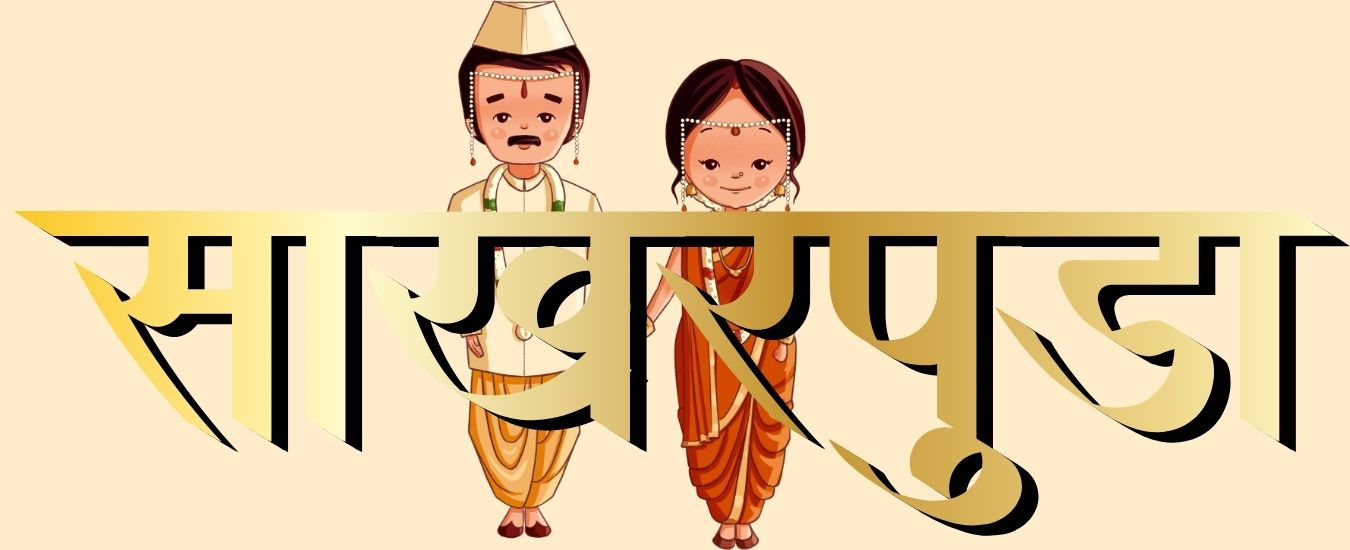The Marathi Sakharpuda ceremony is a magical confluence of sweetness, culture, and emotional bonding. It’s not just about sugar—it’s about sugar-coating the beautiful beginning of two lives coming together with traditions, blessings, and lots of love.
Ever heard of a ceremony where sweetness literally seals the deal?
That’s Sakharpuda for you—a heartwarming pre-wedding ritual in Maharashtrian culture. If you’re planning a Marathi wedding or just curious about Indian wedding customs, this sugary celebration is something you’ll want to know all about.
Etymology and Meaning
Origin of the Word ‘Sakharpuda’
The word Sakharpuda is a sweet blend—literally! It combines “Sakhar” (sugar) and “Puda” (packet), referring to the traditional gift of sugar exchanged during the ceremony.
Sakharpuda in English: What Does It Translate To?
In English, Sakharpuda translates to “Sugar Packet Ceremony” or “Sweet Engagement Ritual.” While it sounds simple, the emotional and cultural meaning runs much deeper.
Alternate Names like Waangnischay
Sometimes, Sakharpuda is called Waangnischay, meaning a formal mutual agreement to marry.
Significance of Sakharpuda in Marathi Weddings
Blessing the Couple with Sweetness
Sakharpuda is all about sweet beginnings. Gifting sugar symbolizes a wish for a happy, prosperous life ahead.
Symbolism and Emotional Value
For Maharashtrians, it’s not just a ritual—it’s an emotional bond sealed with sweets, elders’ blessings, and shared dreams.
Difference Between Sakharpuda and Formal Engagement
While Sakharpuda is the sweet, cultural ceremony, Waangnischay often involves signing an agreement similar to the Roka ceremony in North India.
Timeline and Sequence in the Wedding Journey
Where Sakharpuda Fits In
It typically follows family meetings and horoscope matching and then leads into full wedding preparations.
Preceding and Succeeding Ceremonies
Before Sakharpuda, rituals like Tilak Ceremony or initial discussions happen. After Sakharpuda, ceremonies like Mehendi, Haldi, and later the Mangalsutra ceremony occur.
Rituals and Traditions Followed
The Sugar Packet Exchange
Sugar symbolizes sweetness, but nowadays, families sometimes also exchange symbolic gifts like coconuts or torans.
Gifting the Bride-to-Be and Groom
Apart from sugar, gifts like Paithani sarees, gold jewellery, green bangles, and even nath (traditional nose ring) are gifted to the bride.
Family Introductions and Bonding
The groom’s family arrives with music and festive spirits. Ladies apply haldi-kumkum to the bride, blessing her with fertility and prosperity.
Role of Waangnischay in the Engagement Process
Formalizing the Marriage Intent
During Waangnischay, sometimes a Waangnischay Patrika (written agreement) is signed.
Traditional Documentation and Mutual Agreement
It’s much like early marriage registration processes today but rooted deeply in emotional and spiritual confirmation.
Cultural Authenticity and Ancestral Importance
It’s not just a party; it’s about honouring generations and passing the torch of tradition.
Sakharpuda Dress Code and Attire
Outfits for the Bride-to-Be
A vibrant silk saree or a majestic Paithani paired with heavy jewellery, including nath and green bangles.
Traditional Wear for the Groom
A well-fitted kurta-pajama or a regal sherwani, often topped with a pheta (turban).
Family and Guests’ Attire Tips
The dress code is ethnic—sarees, lehengas, and kurta sets. Some urban families even go for coordinated colour themes!
Food and Festivities
Popular Maharashtrian Dishes Served
Savour Puran Poli, Shrikhand, Batata Bhaji, and Bhakri—true delights for any foodie!
Mithai and Sweets – The Sugar Connection
Desserts like Modak, Pedha, and Barfi flow in abundance, keeping up the sweet spirit.
Music, Dance, and Entertainment
From DJ nights to traditional Lezim performances, there’s a festive vibe you can’t miss.
Modern Variations of Sakharpuda
Urban vs Traditional Styles
Today’s Sakharpuda might feature Instagram-worthy décor, customized themes, or even destination ceremonies at beaches and resorts!
Destination Sakharpuda
Imagine exchanging sugar packets on a Goan beach—modern couples love these mashups!
Planning Tips for a Perfect Sakharpuda Ceremony
Budgeting for the Event
Set a budget covering decorations, photography, venue, and wedding accessories like torans and coconut trays.
From banquet halls to your backyard, the venue should reflect the ceremony’s intimacy.
Décor, Food, and Photography Essentials
Focus on local food options, classic floral décor, and candid photography to capture every emotion.
Importance of Family and Community in Sakharpuda
Strengthening Bonds
This isn’t just about two individuals—it’s two families becoming one.
Role of Elders and Blessings
Grandparents, uncles, and aunts play a central role in showering blessings during the ritual.
Involving Kids and Younger Generation
Include flower girls, little dancers, and helpers to add cuteness and energy!
Regional Variations Within Maharashtra
Differences in Urban vs Rural Customs
Villages may host multi-day celebrations, while cities opt for elegant half-day events.
Sakharpuda in Different Maharashtrian Communities
Some communities incorporate folk songs and family dances for a hyperlocal flavour.
Cultural Relevance in Today’s Times
Keeping Traditions Alive in Modern Society
Modern couples blend traditions with themes and hashtags, keeping customs vibrant.
Bridging the Old and the New
Think mangalsutras and lehengas with hashtags and reels!
Common Misconceptions About Sakharpuda
Is It Just About Sweets?
Definitely not! It’s a pivotal moment when families, culture, and emotions intertwine.
Confusion With Engagement Parties
Unlike modern glam parties, Sakharpuda is rich in symbolism and ancestry.
FAQs
What is Sakharpuda in English?
It translates to “Sugar Packet Ceremony,” symbolizing sweet beginnings.
What is the difference between Sakharpuda and engagement?
Sakharpuda is cultural and symbolic; engagement (Waangnischay) may be formal and documented.
What happens in a Waangnischay ceremony?
Families formally approve and may sign a Waangnischay Patrika confirming the marriage.
Is Sakharpuda compulsory in Marathi weddings?
Not legally, but it’s an emotionally essential tradition.
Can Sakharpuda be celebrated in a modern style?
Of course! Destination events, themed décor, and personalized hashtags are trending.
